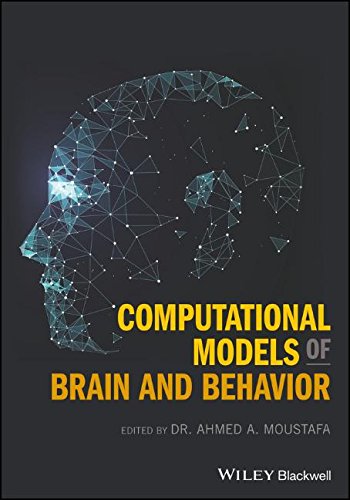by Ahmed A. Moustafa (Editor)
A comprehensive Introduction to the world of brain and behavior computational models
This book provides a broad collection of articles covering different aspects of computational modeling efforts in psychology and neuroscience. Specifically, it discusses models that span different brain regions (hippocampus, amygdala, basal ganglia, visual cortex), different species (humans, rats, fruit flies), and different modeling methods (neural network, Bayesian, reinforcement learning, data fitting, and Hodgkin-Huxley models, among others).
Computational Models of Brain and Behavior is divided into four sections: (a) Models of brain disorders; (b) Neural models of behavioral processes; (c) Models of neural processes, brain regions and neurotransmitters, and (d) Neural modeling approaches. It provides in-depth coverage of models of psychiatric disorders, including depression, posttraumatic stress disorder (PTSD), schizophrenia, and dyslexia; models of neurological disorders, including Alzheimer’s disease, Parkinson’s disease, and epilepsy; early sensory and perceptual processes; models of olfaction; higher/systems level models and low-level models; Pavlovian and instrumental conditioning; linking information theory to neurobiology; and more.
- Covers computational approximations to intellectual disability in down syndrome
- Discusses computational models of pharmacological and immunological treatment in Alzheimer’s disease
- Examines neural circuit models of serotonergic system (from microcircuits to cognition)
- Educates on information theory, memory, prediction, and timing in associative learning
Computational Models of Brain and Behavior is written for advanced undergraduate, Master’s and PhD-level students—as well as researchers involved in computational neuroscience modeling research.
Product Details
- Hardcover: 584 pages
- Publisher: Wiley-Blackwell; 1 edition (November 20, 2017)
- Language: English
- ISBN-10: 1119159067
- ISBN-13: 978-1119159063










Reviews
There are no reviews yet.